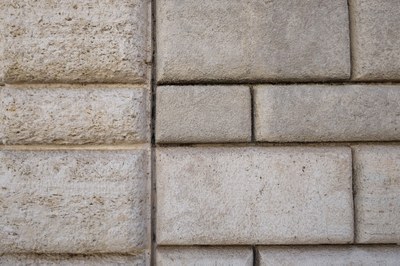Katharina Rotté // The Travertinisation of Urban Rome ca. 1466–1547
The modern "travertinisation of urban Rome" started in the mid 15th century. From then onwards, more and more sophisticated "all'antica"-style buildings in the expanding urban Rome featured travertine ̶ a calcareous sedimentary rock. These buildings included, for example, the courtyards and the benediction loggia of the San Marco complex (Palazzo Venezia, Palazzetto Venezia and the church San Marco, initiated 1455), the façade of the church Santa Maria del Popolo (1472), and the main façade of cardinal Raffaele Riario's residence (Palazzo della Cancelleria, ca. 1489). In the 17th century, travertine use was at its peak in Rome, when virtually every church was adorned with a lavish travertine façade, and Gian Lorenzo Bernini started in 1656 to furnish the piazza in front of St. Peter's with colonnades of enormous travertine columns.
 Just as landscapes may travertinise quickly under certain geophysical conditions, the swift "travertinisation” of early modern Rome was due to favourable circumstances. In my work, I follow these historical processes investigating what caused the spread of travertine in the Roman building industry on the one hand and, on the other hand, how this building material affected architectural designs. Thus, travertine is not only the subject of my dissertation project, but also serves as a medium. By means of this natural stone, I trace developments in the early modern building industry in Rome from the perspective of the history of knowledge, technology, style, and ideas.
Just as landscapes may travertinise quickly under certain geophysical conditions, the swift "travertinisation” of early modern Rome was due to favourable circumstances. In my work, I follow these historical processes investigating what caused the spread of travertine in the Roman building industry on the one hand and, on the other hand, how this building material affected architectural designs. Thus, travertine is not only the subject of my dissertation project, but also serves as a medium. By means of this natural stone, I trace developments in the early modern building industry in Rome from the perspective of the history of knowledge, technology, style, and ideas.
[Abbildung: Detail from the Palazzo Stati Maccarani di Brazzà in Rome, showing travertine and imitated travertine Bossage, Photo Katharina Rotté]
